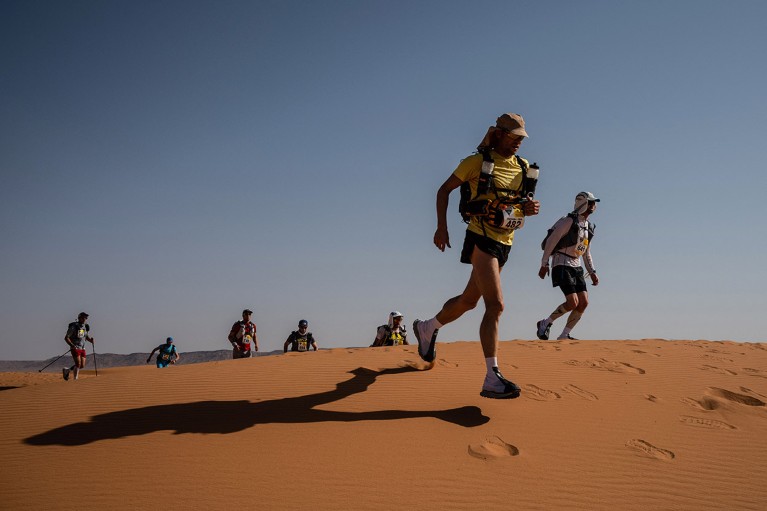
Ultra-runners face a limit on how much energy they can expend.Credit: Jean-Philippe Ksiazek/AFP via Getty
The human body has a ‘metabolic ceiling’ that even the most extreme athletes cannot surpass. A study1 published today in the journal Current Biology finds that over a prolonged period — of 30 weeks or more — that ceiling is about 2.4 times an athlete’s basal metabolic rate (BMR), the minimum amount of energy the body needs per day for essential tasks, such as breathing.
For short periods, people can burn up to about ten times their BMR. Researchers have previously proposed that the body has a metabolic limit2 of around 2.5 times BMR over extended periods, but it has never been properly tested until now, says Andrew Best, a biological anthropologist at Massachusetts College of Liberal Arts in North Adams and a co-author of the work.
Best and his colleagues recruited 14 high-endurance athletes — ultra-runners, cyclists and triathletes. Participants drank doubly labelled water containing deuterium and oxygen-18, which are heavy isotopes of hydrogen and oxygen. Once ingested, both deuterium and oxygen-18 will be lost from the body in the form of water, through urine and sweat. However, some of the oxygen-18 will also exit the body in the form of exhaled carbon dioxide.
By tracing the quantity of these molecules that were flushed out in urine, the scientists were able to calculate the amount of CO2 exhaled, and, from this, estimate the number of calories the athletes burnt. This allowed the team to trace the athletes’ energy output as they did activities — such as competitions — in real time, rather than measuring them on treadmills in a laboratory, says Best.
Hitting the ceiling
During multi-day competitions, some athletes burnt around 9,000 calories a day. But over longer periods — 30 and 52 weeks — their energy expenditure averaged about 2.4 times their BMR. The results show that even the most extreme athletes reach a metabolic ceiling that it is exceptionally difficult to exceed.
The researchers also found that when athletes devoted more energy to running, cycling and swimming, they unconsciously cut back on using energy elsewhere, such as walking or fidgeting.


